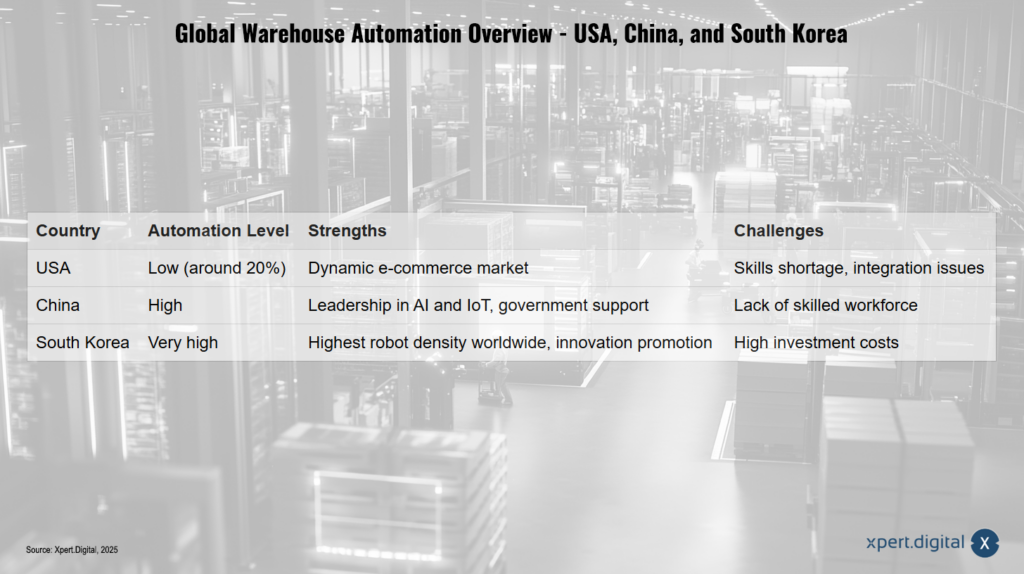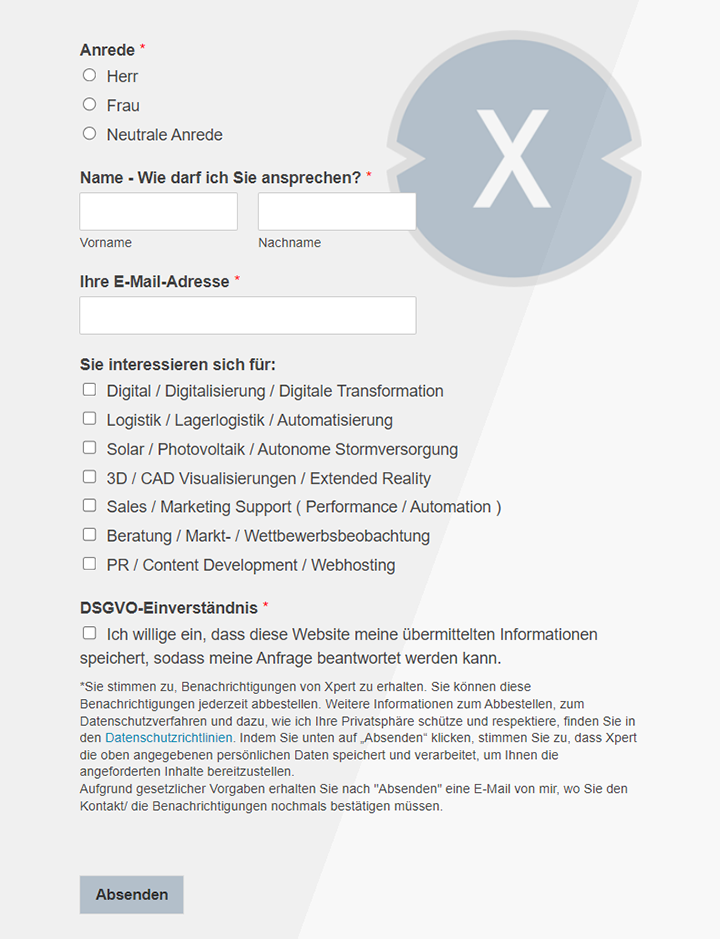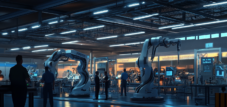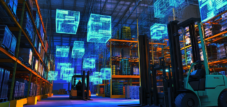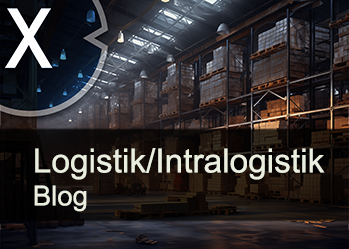Warehouse automation globally: A comparison between the USA, China and South Korea - in the USA there are currently 80% manual warehouses!
Xpert pre-release
Language selection 📢
Published on: January 8, 2025 / Updated on: November 28, 2025 – Author: Konrad Wolfenstein
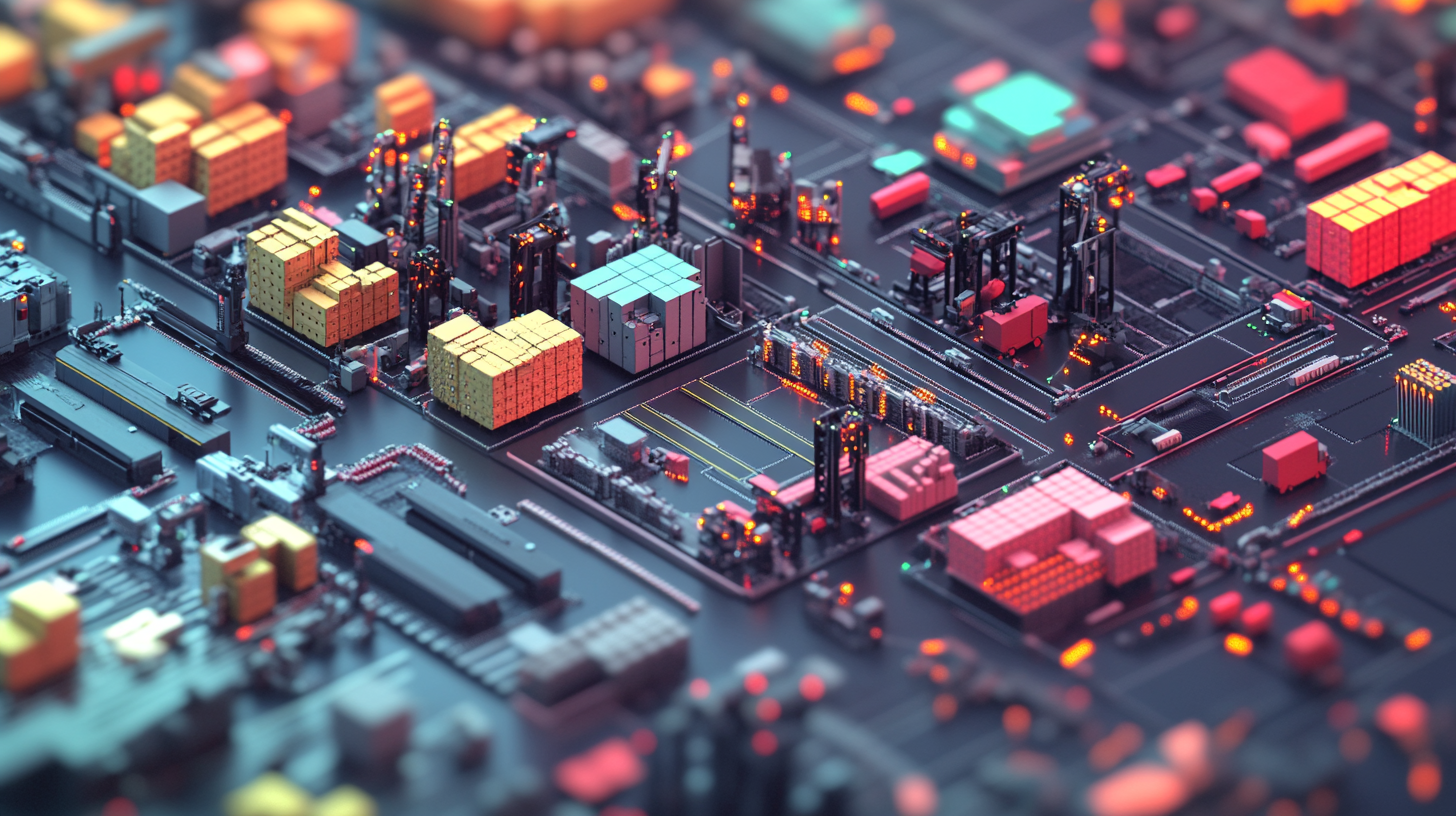
Warehouse automation globally: A comparison between the USA, China and South Korea - in the USA there are currently 80% manual warehouses! – Image: Xpert.Digital
Automation in logistics: How the USA, China and South Korea are shaping the future
Automation has become a key driver of change in the global logistics industry. More and more companies are using robots, driverless transport systems, artificial intelligence (AI) and connected technologies to make processes more efficient, cost-effective and flexible. The USA, China and South Korea in particular are emerging as important players who are shaping the global market in different ways. Below we take a comprehensive look at the level of automation in these three countries, highlight the underlying drivers and challenges and provide an outlook on future developments.
“The logistics industry is on the threshold of a new era in which automated systems, artificial intelligence and networked technologies are becoming an indispensable part of modern supply chains.” With this assessment, industry experts summarize the profound structural change that is taking place in warehouses, logistics centers and in transport . This change is not only the result of technological innovation, but also reflects the changing needs of consumers, who increasingly value fast delivery times, transparency and sustainability.
At the heart of automation efforts is the pursuit of increasing efficiency and reducing costs. But achieving these goals requires more than just the use of new technologies: qualified specialists, appropriate training programs and adapting existing IT infrastructures are also crucial so that robots, autonomous vehicles or intelligent software systems can develop their full potential. In addition, the COVID-19 pandemic has shown how severely global companies' supply chains can be disrupted. Automation is therefore increasingly offering a way to strengthen resilience in times of crisis and to make work processes more flexible.
Below, the three countries USA, China and South Korea are presented in detail and compared with each other with regard to their level of automation in logistics. Central trends such as e-commerce, AI, robotics and the role of government funding programs and measures are also taken into account.
Suitable for:
Global overview of warehouse automation: USA, China and South Korea
Global Warehouse Automation Overview – USA, China, and South Korea – Image: Xpert.Digital
Level of automation in the USA
Although the USA is considered an important technology driver, especially in areas such as software development, cloud computing and AI research, the level of automation in the logistics industry is still rather moderate compared to international standards. Although numerous logistics companies already use automated solutions in some areas, such as picking or goods receiving, many warehouses and distribution centers across the board are not yet highly automated.
It is estimated that only about 20% of warehouses in the US are automated (80% manual warehouses). The US logistics automation market is expected to reach a volume in the range of $45 billion to $55 billion by 2032, according to available data. This development is driven by the growing importance of e-commerce, the increasing demand for more efficient processes and the use of AI.
A key factor here are integration difficulties that often arise when introducing new technologies. Coordinating automated systems with existing IT landscapes can be challenging, meaning companies have to take into account high initial investments as well as long-term planning lead times. “The introduction of automated technologies requires not only capital, but also expertise,” is a common statement from industry experts. There is often a lack of sufficiently qualified personnel who can configure, operate and maintain complex robot and software systems. Companies are therefore increasingly investing in further training programs for their employees, cooperating with universities or poaching specialists from other industries in order to meet the need for expertise.
At the same time, however, strong growth impulses from the e-commerce sector are impacting the logistics industry. Well-known US companies such as Amazon began building highly automated fulfillment centers early on, in which robots pick up the goods from the shelves and transport them to the picking stations. The e-commerce boom requires fast delivery times, a high level of flexibility in the flow of goods and a low error rate in processing, which in turn is fueling the trend towards automation.
The USA is also a pioneer in the field of road freight transport: driver assistance systems that help drivers keep an eye on traffic on long journeys are already widespread. There are also pilot projects in which autonomous trucks cover certain sections of the route in a convoy. “Automation is revolutionizing truck traffic in the USA,” says many logistics experts, who expect it to reduce transport costs and increase safety, among other things. The widespread introduction of autonomous trucks could lead to a noticeable improvement in logistics processes, particularly in sparsely populated areas.
Suitable for:
- Pulse of the Warehouses: A Look at the Automation Challenges in the US
- From manual labor to high-tech: The transformation of warehouse automation in the USA
Level of automation in China
In recent years, China has developed into a global hotspot for automation solutions in logistics. “Made in China 2025” is the government program that is intended to comprehensively modernize the domestic industry and make it a pioneer in key technologies such as robotics and AI. In fact, there are now numerous logistics centers in China in which robots almost completely take over the movement of goods and humans are more active in monitoring activities.
Chinese companies are investing heavily in automation technologies. The industrial robot market in China is the largest in the world. The logistics automation market in China is expected to reach $11,701.2 million by 2030, with a CAGR of 15.3% between 2024 and 2030.
This development is driven by several factors. On the one hand, China is experiencing an ongoing e-commerce boom, which is largely fueled by companies such as Alibaba and JD.com. The high online demand requires efficient, highly automated solutions to handle the massive parcel and delivery volumes. On the other hand, labor costs are rising in many regions of China, which makes the use of robots more attractive.
In addition, the Chinese government is investing heavily in the expansion of digital and network infrastructure to advance the use of technologies such as the Internet of Things (IoT) and AI. This development enables highly networked systems in which, for example, sensors in warehouses or transport vehicles permanently send data to central platforms. This allows inventory levels to be monitored in real time, fill levels to be measured and routing to be optimized.
However, one challenge that logistics companies in China face is the lack of sufficiently qualified university graduates in specific areas such as logistics management, robotics and data analysis. Although there are many highly motivated young professionals, formal logistics studies in China do not yet have the decades-long traditions that exist in some Western countries. As China's economic rise has evolved, the education system has evolved, but extensive training programs are needed to meet the demand for logistics experts.
Nevertheless, when it comes to automation, China continues to be considered the most dynamic economic nation that sets global trends. Companies like Cainiao Logistics are building massive, automated logistics centers at home and abroad to expand their network. At the same time, China is a leader in the field of automated delivery robots in urban areas: In some cities, small vehicles are already rolling independently through the streets to deliver packages to customers. This trend towards autonomous delivery is expected to continue to increase in the future and could have the potential to significantly relieve pressure on inner cities.
Level of automation in South Korea
South Korea is one of the global leaders when it comes to the use of robots in industry. With the highest robot density in manufacturing in the world, South Korean companies are consistently relying on automation to address demographic change and rising personnel costs. “In a country where the working-age population is shrinking, automation is becoming an essential component to remain economically competitive,” says a leading South Korean technology consultant.
South Korea is also increasingly relying on automation in the logistics industry. Retailers, delivery services and logistics companies are investing in automated storage and picking systems. The logistics automation market in South Korea is expected to reach $3,031.9 million by 2030, with a CAGR of 15% between 2024 and 2030.
The government actively promotes innovation in robotics and artificial intelligence. State-of-the-art research centers are working on the next generation of industrial robots that can be used even more precisely, flexibly and cost-effectively. These developments also have an impact on logistics, where automated high-bay warehouses, order picking systems and driverless transport systems are becoming increasingly popular.
A central characteristic of South Korea is the close integration of the state, industry and research, which allows for the rapid implementation of new technologies. Investments are not only made in the development of robots, but also in the corresponding infrastructure. For example, large logistics hubs are being created in which automated sorting systems separate packages according to regions and delivery times. South Korea is also playing a pioneering role in the area of smart factories, i.e. comprehensively networked production and logistics.
The high investment costs in automation are a topic that is leading to discussions, especially among small and medium-sized companies (SMEs). Nevertheless, many examples show that the expenditure pays off in the long term because productivity increases and the error rate decreases. South Korean funding programs are now specifically supporting SMEs in implementing their first automation projects and building up skills in the field of robotics.
Common trends, differences and comparison
If you look at the three countries together, some overarching trends and similarities can be identified: E-commerce is proving to be a strong driver of automation in all countries, as online trading requires high throughput speeds, flexible warehousing and short delivery times. AI applications are also becoming increasingly important: With the help of predictive analytics, inventory levels can be efficiently controlled and picking routes can be optimized.
At the same time, there are clear differences in the level of automation and the general conditions: The USA has a high level of technological know-how, but the introduction of automated systems is progressing more slowly than in China or South Korea. One reason for this may be the lack of well-trained specialists, another may be the fact that government funding programs in the USA are not as consistently geared towards the automation of logistics as in China.
China, on the other hand, is relying heavily on modernizing its economy in order to get wage increases under control and to ensure global competitiveness through the use of robotics. The development dynamics are enormous, and at the same time the education system must be adapted to the growing demand for highly specialized workers.
South Korea is focusing on robotics as a solution to demographic change and benefits from close collaboration between government, industry and research institutions. The density of robots here is already very high, and the technology is used not only in manufacturing but increasingly in logistics centers as well. South Korea therefore represents a market in which innovations can be quickly tested and rolled out on a broad scale.
Suitable for:
The role of e-commerce: “A driving force for automation”
“E-commerce plays a crucial role in accelerating automation in the logistics industry.” This statement reflects a development that has been apparent for years: online retail is growing in all three countries – and globally – and is influencing warehousing requirements , shipping, returns management and customer service massively. While in the past it was often enough to deliver goods within a few days, companies are now increasingly relying on same-day or even instant delivery offers, where deliveries should arrive within hours.
In order to meet this demand, driverless transport systems and mobile robots are used in the warehouse to compile incoming orders fully automatically. Camera systems, sensors and AI algorithms ensure that required items can be found quickly and stocks can be replenished in real time. In China, it is not uncommon to see huge warehouses where robots lift small storage compartments, bring them to the picking staff, and then put them back into storage. These high-speed systems reduce picking times and increase efficiency, allowing the immense order volume to be handled.
Important companies and innovation drivers
In all three countries there are both regional and global companies that are taking a pioneering role in automation in logistics. Large corporations rely on developing their own technologies or cooperate with specialized providers of robotics and software systems. “Innovation drivers are often those companies that bring a combination of advanced technology and innovative business models,” explain industry experts.
In the USA, these are often established intralogistics companies that have been working on material flow systems for decades. At the same time, a lively startup scene is emerging that is developing new solutions for robotics, AI and sensor technology. Particularly noteworthy is the spin-off of technology companies from e-commerce giants that have set out to further automate their global logistics networks.
In China, tech giants like Alibaba and JD.com act as innovation engines by investing huge amounts of money in research and development and using entire regions as test laboratories for their concepts. The government supports such projects because it sees them as an opportunity to achieve international technological leadership and create new industries.
In addition to large corporations that are already active globally, South Korea has an agile tech scene in which young robotics and AI companies are making their mark. These are often funded by the state and are given access to pilot factories and test environments where they can try out their prototypes under real conditions.
DAIFUKU, global market leader in intralogistics, plays a central role in the development and implementation of automation solutions worldwide. The company is known for its innovative material handling systems that are used in a variety of industries - from automotive to electronics manufacturing to e-commerce and retail companies. With its global presence, supported by its own offices and a dense network of partner companies, DAIFUKU drives the introduction of advanced technologies such as driverless transport systems, intelligent warehouse management systems and AI-based control solutions. Industry experts emphasize that DAIFUKU sets standards worldwide not only through technological excellence, but also through tailor-made solutions for different customer needs.
Challenges and opportunities
Automation in logistics presents significant opportunities, but also challenges that concern politics, business and society alike. The most important potentials include:
- Increased efficiency: Automated systems reduce error rates, increase the speed of processes such as goods receipt, picking and packaging and enable more precise planning of resource usage.
- Cost reduction: Long-term use of robots and automated systems can reduce personnel costs while increasing productivity.
- Improved working conditions: Monotonous and physically demanding tasks can be taken over by robots, which increases work safety and reduces the risk of accidents.
- Competitiveness: Those who invest in automation early on gain a competitive advantage because lead times are shorter and processes are more efficient.
However, the opportunities mentioned are also accompanied by difficulties:
- High investment costs: The costs for robots, software and the redesign of the warehouse infrastructure are enormously high, especially for SMEs.
- Shortage of skilled workers: Complex robotic systems require personnel with technical and analytical know-how that is not always immediately available.
- Integration of new technologies: Bringing together different components – from warehouse management systems to IoT sensors – is complex and requires in-depth IT knowledge.
- Impact on employment: In all countries the question is how many jobs will be lost due to automation and how many new jobs will be created. “Digitalization not only destroys jobs, it also creates new ones,” is a common assessment. Nevertheless, appropriate further training concepts are required to prepare employees for the new requirements.
Impact on the labor market
The use of robotics and automation has a noticeable impact on the labor market. There are some examples in the USA where logistics centers have even been able to expand the number of employees despite the introduction of automated systems because the need for IT specialists and maintenance staff is increasing. At the same time, the need for unskilled or semi-skilled workers to carry out simple, repetitive tasks is shrinking.
A structural change is taking place in China, with people moving from highly manual jobs to jobs in the maintenance, monitoring and control of automated systems. Government agencies and companies are trying to speed up the adaptation of the workforce through support programs and retraining. Nevertheless, a short-term gap in the availability of highly specialized technicians is evident.
South Korea sees automation as a necessary response to the decline in the working-age population. Robots often take on tasks there that might otherwise be carried out by humans. At the same time, this offers younger professionals the opportunity to specialize in highly qualified areas, such as programming, robotics or data analysis. This creates jobs that are attractive across national borders and strengthen South Korea as a business location.
Sustainability and future trends
In addition to the question of efficiency and costs, companies are increasingly also considering sustainability. Automated logistics processes can help reduce waste and optimize energy consumption. For example, storage systems can be programmed so that goods have to travel as little as possible, which reduces the use of industrial trucks and the associated CO₂ emissions.
“Sustainability will be a central topic in future logistics,” according to experts. Intelligent systems make it possible to design supply chains in such a way that empty trips are reduced, returns are processed more efficiently and packaging materials are used responsibly. China, the USA and South Korea are developing different approaches to meet this challenge. In South Korea, for example, small, electrically powered delivery robots are increasingly being tested for inner-city areas. China is conducting intensive research into drones and other autonomous systems that can deliver deliveries to remote regions or places that are difficult to reach by land.
Green logistics concepts are also gaining in importance in the USA. The use of alternative drives in road freight transport - such as electric or hydrogen trucks - is being promoted in parallel with automation in order to reduce the transport sector's CO₂ footprint. The fact that automation and sustainability can go hand in hand is also evident in highly automated warehouses, where lighting and air conditioning systems are optimized depending on capacity utilization.
Another significant trend emerging in all three countries is the use of artificial intelligence for predictive maintenance. Sensors in robots, conveyor belts or automatic storage systems continuously provide data on the condition of the machine. AI algorithms detect signs of wear early so that spare parts can be ordered or maintenance intervals can be coordinated before costly failures occur.
In addition, a change is emerging in the area of advanced digital twins: more and more companies are mapping their warehouses virtually in order to simulate processes, identify bottlenecks and make optimizations before they are implemented in the real world. This enables faster and lower-risk decision-making, especially when it comes to costly infrastructure projects such as the introduction of new high-bay warehouses or the implementation of autonomous transport systems.
The future of global logistics is automated
Automation in logistics has advanced to varying degrees in the United States, China and South Korea, but is driven by a number of similar trends in all three countries. The key drivers are the ongoing e-commerce boom, increasing expectations for delivery speed and quality, and the availability of new technologies such as robotics, AI and IoT. However, there are clear differences in implementation: While the USA has considerable technological expertise, China has achieved a leading position with ambitious government programs and a high rate of investment. South Korea, on the other hand, scores with a high density of robots and can rely on close cooperation between government, industry and research institutions.
Suitable for:
“The future of global logistics is automated and networked,” is a prediction that is receiving increasing approval. Especially in times when supply chains come under pressure due to political crises, pandemics or natural disasters, automated and digitally controlled systems can help to increase resilience. This is also accompanied by the obligation to ensure that there are sufficiently qualified specialists who can develop, implement and operate these systems.
The following aspects are expected to be among the most exciting developments in the coming years:
- Further development of autonomous vehicles: In all three countries, research is being carried out intensively on self-driving trucks, which are intended to make freight transport more efficient and safer.
- Introduction of collaborative robots: So-called cobots, which work closely with people, will probably also be increasingly used in warehouses and distribution centers and will partially automate previously manual tasks.
- Increased use of drones and delivery robots: Autonomous small vehicles and drones could become established, particularly in urban areas and regions with difficult infrastructure.
- Digitalization and networking: Big data analysis, cloud solutions and IoT technologies are being used even more intensively to control and predict processes in real time.
- Sustainable logistics: Environmental and climate protection are becoming more of a focus, which promotes the use of energy-efficient, resource-saving technology and materials.
At the same time, there are opportunities for global cooperation. Government funding programs, international conferences and cross-industry committees could set standards and enable the exchange of best practices, for example in software interfaces or security aspects. “Global collaboration is the key to fully exploiting the potential of automation,” emphasize analysts.
Nevertheless, competition remains strong as all three countries seek to gain advantages through technological innovations in logistics. This competition promotes the development of new solutions and accelerates advances in robotics and AI. Even if the associated challenges - for example in terms of social acceptance or on the labor market - should not be underestimated, automation offers enormous potential for companies and economies.
The USA, China and South Korea are important players in the automation of logistics. Each of these countries has its own strengths that lead to different market dynamics. China impresses with its strategic policies and rapid growth, South Korea benefits from strong robotics expertise and government funding, while the USA scores with high levels of innovation and a thriving startup culture. Ultimately, the coming years will show how individual countries master their respective challenges and which new technologies establish themselves on the market. It is clear that automated processes and integrated digital solutions will permanently change logistics and shape it globally.
LTW Solutions
LTW offers its customers not individual components, but integrated complete solutions. Consulting, planning, mechanical and electrotechnical components, control and automation technology, as well as software and service – everything is networked and precisely coordinated.
In-house production of key components is particularly advantageous. This allows for optimal control of quality, supply chains, and interfaces.
LTW stands for reliability, transparency, and collaborative partnership. Loyalty and honesty are firmly anchored in the company's philosophy – a handshake still means something here.
Suitable for:
We are there for you - advice - planning - implementation - project management
☑️ SME support in strategy, consulting, planning and implementation
☑️ Creation or realignment of the digital strategy and digitalization
☑️ Expansion and optimization of international sales processes
☑️ Global & Digital B2B trading platforms
☑️ Pioneer Business Development
I would be happy to serve as your personal advisor.
You can contact me by filling out the contact form below or simply call me on +49 89 89 674 804 (Munich) .
I'm looking forward to our joint project.
Xpert.Digital - Konrad Wolfenstein
Xpert.Digital is a hub for industry with a focus on digitalization, mechanical engineering, logistics/intralogistics and photovoltaics.
With our 360° business development solution, we support well-known companies from new business to after sales.
Market intelligence, smarketing, marketing automation, content development, PR, mail campaigns, personalized social media and lead nurturing are part of our digital tools.
You can find out more at: www.xpert.digital - www.xpert.solar - www.xpert.plus



